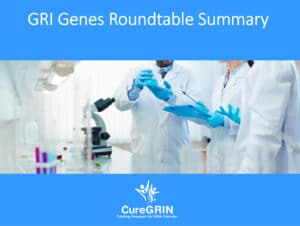Are All GRIN Disorders the Same?
Share This Post
By Keith McArthur
When we first got a diagnosis for our son Bryson in 2015, my wife Laura and I immediately sought out other GRIN1 families. We learned his rare disease didn’t have a name, so we referred to it simply as GRIN1.
In the years since the diagnosis, we’ve come to learn that rather than being a distinct disease, our son’s condition is part of a broader set of GRIN Disorders.
How Similar and Different are GRIN1, GRIN2A, GRIN2B and GRIN2D?
So just how much commonality is there between GRIN1, GRIN2A, GRIN2B and GRIN2D? And what are the primary differences?
At recent GRIN conferences in Atlanta and Barcelona, researchers and parent groups presented various summaries of symptoms associated with mutations in the different GRIN genes. I’ve aggregated the results of those presentations and compiled them here. Where researchers have given permission, we have included links to their presentations at the end of this post.
Summary
GRIN1 and GRIN2B patients have much in common, though seizures are less common with GRIN2B patients, and the range of intellectual disabilities is less severe among GRIN2B. While some GRIN2A patients have severe intellectual disabilities, roughly half have no intellectual impairment at all. In addition, low muscle tone – common among disorders involving other GRIN gene types — is rare among GRIN2A patients. Virtually all GRIN patients have speech impairment, even those without intellectual disabilities. GRIN2D patients appear to have the most severe phenotype, though there is not yet enough data from these patients for meaningful comparisons.

Some Caveats
Before we get into the details, some caveats.
First, there are significant variations among patients affected by mutations in the same gene; this is true in almost all genetic disorders. These differences depend on the specific mutation and other factors. This summary provides a snapshot of the rough likelihood that people with a mutation in a particular gene will have a particular symptom. It should not be considered predictive of what symptoms individual patients will develop.
Second, this data is an incomplete, imperfect work in progress. As more parents register for patient registries, we will be able to compile more accurate data. Of the five sources used to compile this data, three only included data on GRIN2B. As a result, the accompanying table is more likely to list a range of prevalence for GRIN2B. Those without a range are usually based on a single source and should not be considered more precise. In addition, the research presented at these conferences did not include details on mobility for genes other than GRIN2B, so that is not included here.
Third, there is little data available for GRIN2D patients, where there are only a handful of known cases. While the table lists 100% for most GRIN2D symptoms, the certainty represented by this number is likely to fall as more GRIN2D cases are catalogued. (Anecdotally, we are aware of GRIN2D patients who do not display all these symptoms.)
How are GRIN Disorder patients similar?
Although there are seven different GRIN genes (GRIN1, GRIN2A, GRIN2B, GRIN2C, GRIN2D, GRIN3A, and GRIN3B), only four of these (GRIN1, GRIN2A, GRIN2B, and GRIN2D) are currently known to have disease-causing variants.
There are patients among all four genes who have epilepsy, intellectual disability, movement disorders, abnormal MRIs, speech impairment, and visual disturbance.
Here are the symptoms that appear to have similar prevalence among the different genes.
Speech Impairment: Regardless of gene, virtually all GRIN patients are either non-verbal or have other speech impairments. The severity of these impairments can vary greatly.
Abnormal MRIs: While many people with GRIN Disorders have normal MRIs, there is a percentage of each group where MRIs are abnormal. In GRIN1 and GRIN2D patients, the abnormal MRIs often relate to cortical atrophy, which is less common among GRIN2B and GRIN2D patients.
Movement Disorders. There are patients affected by mutations in all four genes who have at least one kind of movement disorder. However, the data varies greatly here between studies, perhaps because there is not a uniform approach to defining movement disorders. (Among the four sources that present data on movement disorders among GRIN2B patients, two put the prevalence at 10%, while the others put it at 57% and 70%.)
What are the main differences between the different GRIN genes?
The most significant differences relate to patients affected by mutations in the GRIN2A and GRIN2B genes.
GRIN2A Differences
While there is considerable overlap among patients with disorders in all four genes, GRIN2A has more differences in its phenotype.
Intellectual Disability: There are patients across all four genes who have severe intellectual disabilities. Intellectual Disabilities appear to be most pronounced in patients with GRIN1 and GRIN2D, but slightly less severe among patients with GRIN2B. But one half of GRIN2A patients have no intellectual disability, and another quarter of these patients have only mild intellectual disability.
Hypotonia. While low muscle tone is common among GRIN1 (71%), GRIN2B (53%-94%) and GRIN2D (100%), it is rare among patients with GRIN2A.
Visual Impairment: While visual impairment is common among GRIN1 (75%) and GRIN2B (39%-80%) genes, it is more rare among patients with GRIN2A (approximately 40% according to Dr. Tim Benke’s data. Common impairments include strabismus (crossed eyes), and cortical visual impairment. There is no compiled data on visual impairments for people with GRIN2D.
GRIN2B Differences
While GRIN2B shares much in common with GRIN1 and GRIN2D, patients sometimes have less severe intellectual disability. In addition, epilepsy is less common.
Epilepsy. While many GRIN2B patients have seizures, the prevalence is far lower than with the other GRIN genes. While at least 70% of GRIN1, GRIN2A and GRIN2D patients have epilepsy, the data suggests a much lower prevalence among GRIN2B patients (between 19% and 52% per cent according to different sources).
Sources
(Sample size: GRIN1 n= 19; GRIN2A n=7; GRIN2B n=14)
“GRIN2B Family Meeting.” Dr. Jennifer Bain. Simons Searchlight. Presented at 2019 CFERV Conference on GRIN Variants. Atlanta. 2019.
(Sample size: GRIN2B n=31)
“Survey Results.” Zoey Costello. GRIN 2B Europe. Presented at EU GRIN2B Symposium. Barcelona. 2018.
(Sample size: GRIN2B n=51)
Keith McArthur is CEO and Head of Science for the CureGRIN Foundation. His son Bryson has a GRIN1 variant. He can be reached at keith@curegrin.org
Read more Posts
We’re living on a prayer that you will help us reach our goal!
Share This Post Share on facebook Share on linkedin Share on twitter Share on email Last month I wrote to tell you about our $250,000

GRI Genes Roundtable – Jul 2021
We brought together researchers and clinicians studying GRI Disorders, GRIN genes, GRIA genes, GRIK genes, NMDA receptors, and other ionotropic receptors (AMPARs, kainate receptors, and delta receptors) to discuss and exchange ideas on GRIN, GRIA, and GRIK variants. There were 50 participants present for the meeting.
